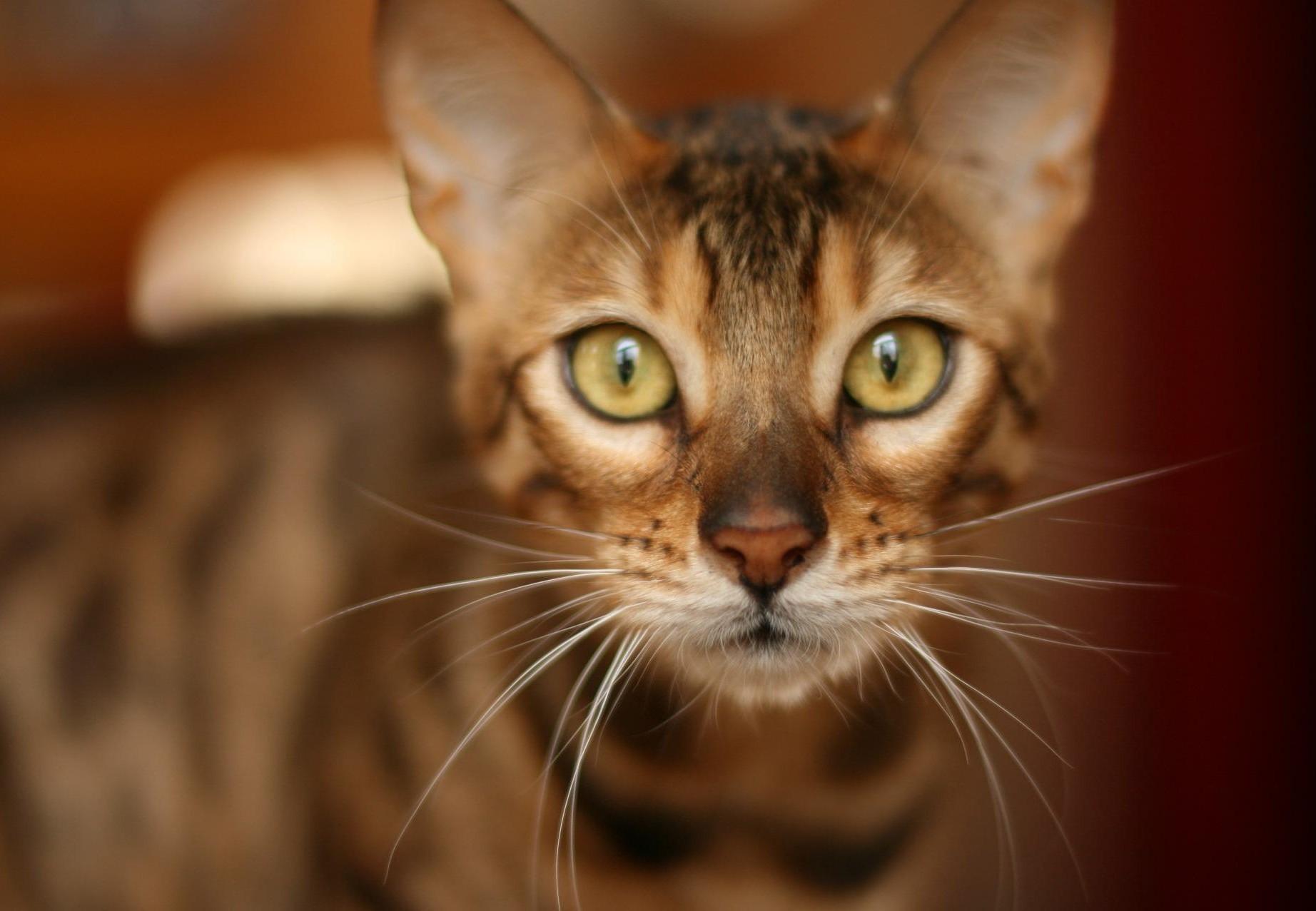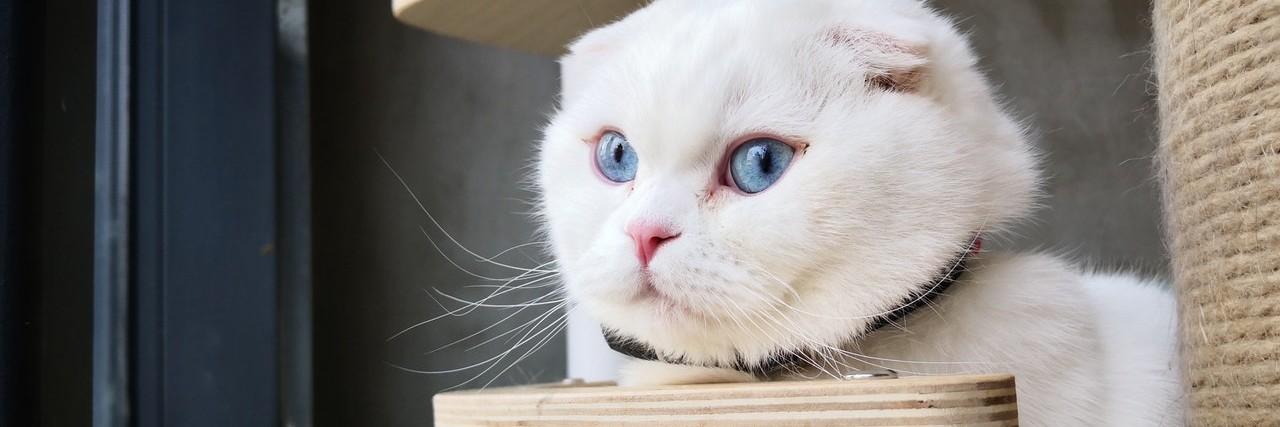
The World of Pedigree Cats
Bred to look and act a certain way – many breeds face a wide range of problems
The selective breeding of domestic cats has resulted in a variety of body shapes, coat colours and types, facial features and character traits. Pedigree animals are bred under various umbrella organisations, currently there are over 70 recognised breeds. These have names like 'Persian', 'Main Coon', 'Norwegian Forest Cat', 'Manx', 'Turkish Angora', 'Siam', 'Sphinx', to name just a few. The cat breeders concentrate primarily on more or less aesthetic features and thus change the appearance of cats according to their ideas of beauty and attractiveness. Here some examples:
Siamese
The Siamese cat is one of the oldest and most famous pedigree cats. Siamese cats are slim, lithe, and well-muscled. Their eyes show an intense blue or vivid, bright green or one blue and one green eye – depending on their coat colour. Their fur is described as very short, fine, shiny and silky. The fur colour is white to cream, contrasting with the dark markings on the head, ears and legs.

British Shorthair
British Shorthair cats are muscular, stocky in appearance, with a broad chest, broad shoulders and a broad back. Their legs are considered to be – according to the breeder's specification – 'short and stocky'. They look at the world through large, round eyes, the colours vary from copper/dark orange to blue to green/blue-green. The coat structure – strong, short, very dense, with undercoat – underlines its entire appearance. In contrast to many other pedigree cats, the British Shorthair can have many fur colours, including black, blue, lilac, red, cream.

Sphynx
The Sphynx cat is one of those breeds that brings up a lot of controversy. Their hairlessness is one, if not THE criteria, why the Sphinx is considered as a breed that suffers from its breeding. Even though these cats look 'naked' they are not. A light fluff covers their bodies. Their distinctive eyes are lemon-shaped and match the colour of their coat. White Sphynx cats usually have light blue eyes, while animals with very dark skin have correspondingly dark eyes.

These examples are only a small extract from the range of breeds and their characteristics. If you take a closer look, you will find that in some breeds the welfare and health of the animals is criminally neglected. Some of the breeds have been changed by artificial selection in such a way that they are subject to welfare implications and are extremely susceptible to diseases and physical ailments.
Breeds With Welfare Implications
Bred for their
- Scottish Fold: Fold-eared cats like the Scottish Fold, according to the breed standard, have ears that are bent forward and downward. The shape of the ear is preceded by a genetic defect that affects the bones and cartilage of the entire body and can lead to further deformations, such as joint deformations with the resulting pain. These breeds tend to have limited mobility, reluctance to jump and climb, and lameness of the front and rear legs.
Other breeds affected: Highland Fold, Selkirk Rex
- Persian cat: The desired head shape is "round and solid, well proportioned, very broad skull", the nose is short and wide (according to the ideal expression). Unfortunately, all short-headed breeds tend to have breathing difficulties (resulting in restricted physical capacity), misaligned jaws and teeth, eye diseases, as well as difficulties during labour and stillbirths.
Other breeds affected: Exotic Shorthair, British Short-/Longhair
- Munchkin: Munchkins are among those breeds with disproportionate dwarf stature. They are also nicknamed Sausage cats. Due to their shortened legs, the cats are clearly restricted in their species-specific behaviour and movement, they are prone to herniated discs, misaligned bones and joints as well as difficult births. Pairing two Munchkin cats can result in the embryos dying in the womb.
Other breeds affected: Minskin, Minuet
- Manx: The Manx breed is one of the short or tailless breeds. They result from different degrees of shortening of the caudal spine. The animals lack an important means of communication with the absence of their tails, breeding has effects on the skeleton and spinal cord, sexual apparatus and gastrointestinal tract, among other issues.
Other breeds affected: Cymric, Japanese/Kurilian Bobtail
It is no coincidence that animal welfare organisations, veterinarians and other experts speak out against the breeding of extremes and recommend / demand breeding bans, especially when the effects of breeding more than obviously violate existing animal welfare law. With this in mind, we encourage cat lovers to be critical when choosing their cat and to break away from the supposed ideal of the breed and put the cat's health and welfare in the forefront.
Source
Gunn-Moore D, Bessant C, Malik R. Breed-related disorders of cats. The Journal of small animal practice. 2008;49:167–8. doi: https://doi.org/10.1111/j.1748-5827.2008.00572.x
Akira Takeuchi DVM. World Small Animal Veterinary Association World Congress Proceedings, 2003. VIN.com. 2014 Jul 1. https://www.vin.com/doc/?id=6346982
Welcome to TICA - The International Cat Association, TICA cats, TICA pedigreed cats, pedigreed cats, pedigreed cats registry, household pet cat registry, domestic cat registry, Savannah cat, Bengal cat, Persian cat, Maine Coon cat. [accessed 2021 Mar 9]. https://tica.org/de/
Schlueter C, Budras K, Ludewig E, Mayrhofer E, König H-E, Walter A, Oechtering G. Brachycephalic Feline Noses: CT and Anatomical Study of the Relationship between Head Conformation and the Nasolacrimal Drainage System. Journal of feline medicine and surgery. 2009;11:891–900. doi: https://doi.org/10.1016/j.jfms.2009.09.010
International Cat Federation e.V., ICF e.V. Katze, Katzenbabys, Katzenverein. [accessed 2021 Mar 15]. https://www.intercf.de/fold.html
BS-. Fédération Internationale Féline :: Breed standards. [accessed 2021 Feb 15]. http://fifeweb.org/wp/breeds/breeds_prf_stn.php
e.V MH| W. Qualzucht: Der Trend zu kranken Katzen. WTG | Welttierschutzgesellschaft. 2020 [accessed 2021 Mar 15]. https://welttierschutz.org/qualzucht-der-trend-zu-kranken-katzen/

